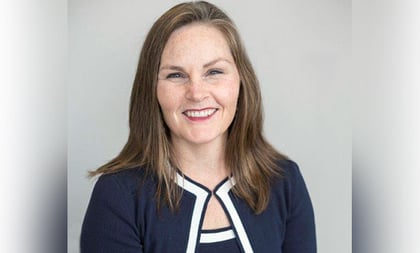The Achieving a Better Life Experience (ABLE) Act of 2014, which allows people with severe disabilities to maintain savings accounts of more than $2,000 without losing public benefits, is arguably the most significant legislation for the disabled in a generation.
Further, President Donald Trump’s 2017 tax overhaul expanded the program.
So why haven’t more financial advisors embraced this opportunity to help families set up tax-advantaged 529 ABLE accounts? Only 20,653 of the state-sponsored plans, with $98.6 million in assets, have been established as of March, according to the consultants Strategic Insight.
But some FAs could hardly wait. As soon as the 529 ABLE was introduced, Kathleen Oberneder, special needs advisor with Crescendo Wealth Management, in Wisconsin, began helping her adult clients with disabilities and parents of special needs children create these accounts.
In an interview with ThinkAdvisor, the ABLE Act expert explains the accounts’ strengths and drawbacks and why she advocates for them in speaking engagements.
Oberneder, 43, has focused on special needs planning since the birth of a daughter with Down syndrome seven years ago and is the founder of a Special Needs Advisory Board in the county where she practices.
The primary reason more advisors haven’t involved themselves with 529 ABLE plans — for people whose disability onset has occurred before age 26 — is that the plans have been direct-sold. It took four years for the first advisor-sold plan to surface: On July 13 of this year, Capital Groups’ American Funds launched ABLEAmerica, the only advisor-sold plan, according to the firm. It is available nationwide.
About 40 states and Washington, D.C., have ABLE account programs. In most states, residency is not a requirement to open one.
Indeed, there is no shortage of confusion and fear when it comes to 529 ABLE accounts; and certainly some financial advisors aren’t even aware of them.
As soon as the ABLE act was passed, advisor Oberneder joined Crescendo from Northwestern Mutual insurance company and ever since has striven “to be on top of every detail about ABLE accounts,” she says.
Providing for tax-free investment growth and distributions, most plans offer mutual funds from Vanguard, Dimensional Fund Advisors, Fidelity and BlackRock, among others.
On the downside: Annual contributions are limited to $15,000. But the accounts can hold up to $100,000 — even more when the owner is earning job income — and still allow Supplemental Security Income (SSI) and Medicaid benefits to be received.
That’s important because another big reason for reluctance to open the accounts is fear they will result in owners losing those government benefits.
Before the 529 ABLE program, SSI and Medicaid recipients were permitted to have only $2,000 in their own name — or else be deprived of the two public benefits. The only way to have more money at their disposal was through creation of a special needs trust.
Capital’s ABLEAmerica plan is sponsored and administered by Virginia 529. “Our advisors are pleased to have this as a viable option for people living with disabilities … Working with a financial advisor can help them and their families understand their choices and determine if an ABLE account makes sense,” says a Capital spokesperson in a statement.
ThinkAdvisor recently interviewed Oberneder, on the phone from her office in Grafton, near Milwaukee. Wisconsin, incidentally, does not have its own 529 ABLE program. “When the ABLE act was passed,” says the advisor, who was a clinical speech language pathologist early in her career, “the Wisconsin legislature said, ‘Let’s save $4 million and not create these and just give a greater tax benefit to Wisconsin.’”
Here are excerpts from our conversation:
THINKADVISOR: How significant is the 529 ABLE Plan?
KATHLEEN OBERNEDER: It’s one of the biggest pieces of legislation for the disabled community since passage of the Americans with Disabilities Act [ADA] in [1990]. But it isn’t perfect — you can contribute only $15,000 a year.
What’s the best thing about the ABLE 529?
It’s [essentially] having your own bank account. Some states [even] provide a debit card for the individual to use. That makes parents nervous, but there are state plans with safeguards to prevent disabled individuals from blowing the money and being taken advantage of.
Do you think part of the reason more people aren’t opening ABLE accounts is that it’s daunting to set them up without a financial advisor’s help?
Yes. How the accounts work and what to choose are overwhelming for people. Not enough families who have a child with a disability are doing financial planning in general. There isn’t enough focus by the financial advisory industry on people with disabilities. But nearly one in five families are impacted by a disability, so there’s a tremendous market for special needs planning.
Why, then, aren’t more FAs recommending ABLE plans?
If advisors aren’t compensated for work, there’s typically not much motivation to get involved. But now, with American Funds’ ABLE plan [introduced July 13], they can get compensated. It’s the first advisor-sold ABLE plan. The advisor gets paid on the basis of share class, and there’s the traditional upfront sales charge, 12b-1 fee and trail.
What are the tax benefits of a 529 ABLE account?
The money put in is after-tax dollars, like a Roth IRA; so it grows tax-deferred. It’s tax-free distribution.
Do you have an ABLE account for your 7-year-old daughter who has Down syndrome?
Yes, I’m using it to save for Emily’s future with the thought that she could attend college. But before that, I can take money out to pay for her to go to camp.
Not every state has an ABLE plan. But, in most states, there’s no residency requirement to use their plan. What else is important when considering various programs?
Florida and Oklahoma are two states in which the plans are for residents only. When I look at a program, it’s not just the investments, custodian, fees and performance but how well they track the recordkeeping — the money coming in and going out. It’s ultimately the ABLE owner’s responsibility to keep track of the payments they make for qualified expenses.
Does having a 529 ABLE account mean that a special needs trust isn’t needed?
No. ABLE accounts aren’t meant to replace special needs trusts. The key is that a special needs trust and an ABLE account work together in collaboration, whether a private trust or a pooled trust, which certain states have [usually] for lower account balances. The 529 ABLE isn’t a solution for an inheritance. But you can contribute part of one and set up an independent trust for the rest.
What’s the biggest financial improvement that ABLE plans have brought to people with disabilities? The ABLE National Resource Center says: “To remain eligible for … public benefits, an individual must remain poor.”









 September 05, 2018 at 04:31 PM
September 05, 2018 at 04:31 PM











